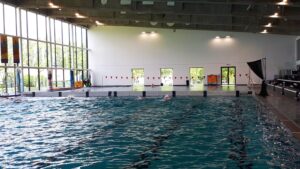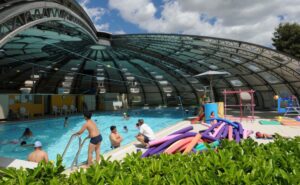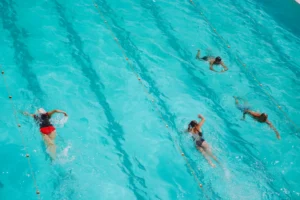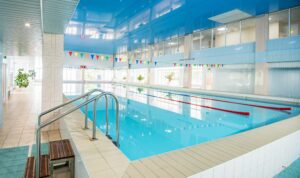Let's talk about filtration rates
collective swimming pools?

By Emmanuel Quilichini, ENSAM engineer and president of Sunny Shark.
To read his upcoming articles directly on Linkedin, subscribe to their newsletter.

Is it an urban legend that a small reduction in filtration rate can significantly reduce power consumption?
It is healthy to be sceptical and not to take statements at their word, so I present you with the graph above, taken from our own field measurements on a collective swimming pool: as predicted by the laws of fluid mechanics, the electrical power consumed by the filtration pumps decreases with the cube of the flow of filtered water.
This is significant, to say the least, as you can see: reducing the filtration rate by a quarter compared to the existing system divides the initial consumption by more than 2!
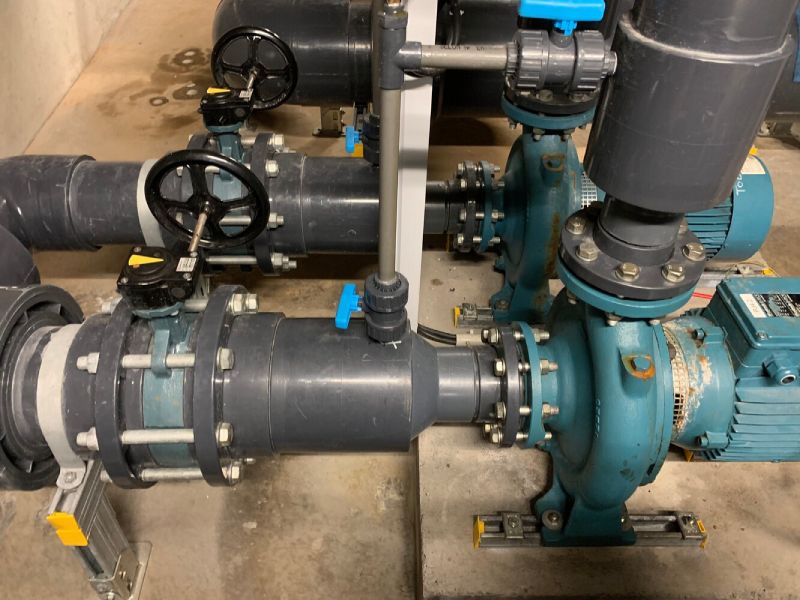
Example of a group of centrifugal pumps, classic in filtration
You will tell me that one does not play with filtration rates with impunity and you will be totally right.
There are regulations that define minimum flow rates according to the size of the basin and there are also operating constraints specific to each site, based on the experience of the operators and possible defects in the hydraulicity and/or chemical quality of the water, sometimes insufficient for the minimum filtration rate.
However, one should take time to reflect on each of these aspects and ask oneself whether it is really justified to constantly over-filter in relation to the regulatory minimum.
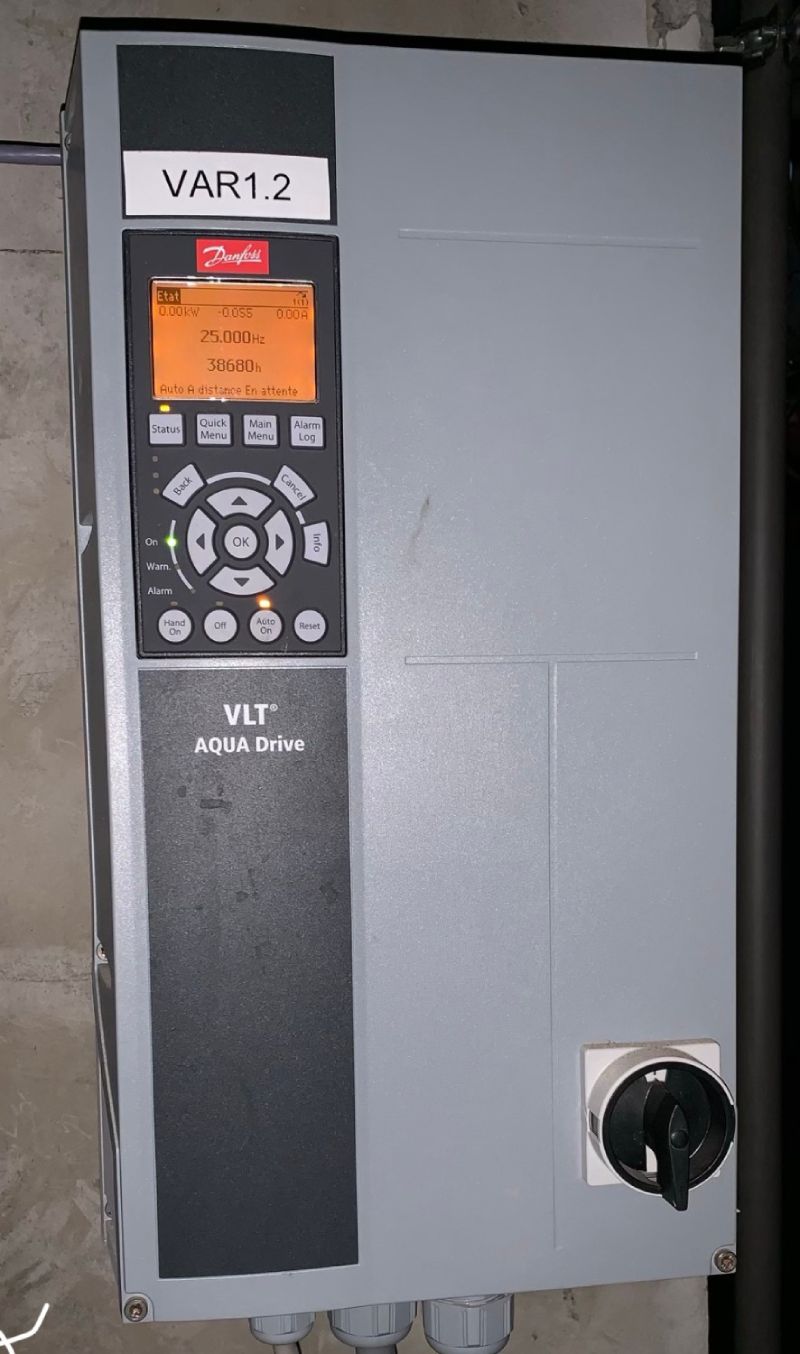
Danfoss VLT variable speed drive
French regulations now allow a reduction of 25% in the filtration rate during unoccupied periods.
25%, in fact: this allows the power consumption of the pumps to be divided by more than 2 during the period of reduced flow.
If the pool in our example is unoccupied for 10 hours a day and the power consumption of the pumps is reduced by 58% over this period, the calculation is simple:
9kw x 14h + 3,8kW x 10h= 164 kWh per day instead of 9kW x 24h = 216 kWh per day, i.e. a reduction of 24% in average consumption. 52 kWh / day.
Over 350 days of operation, this results in savings of 18.2 MWh, which represents 4000 € saved each year for an assumed tariff of 220€ per MWh.
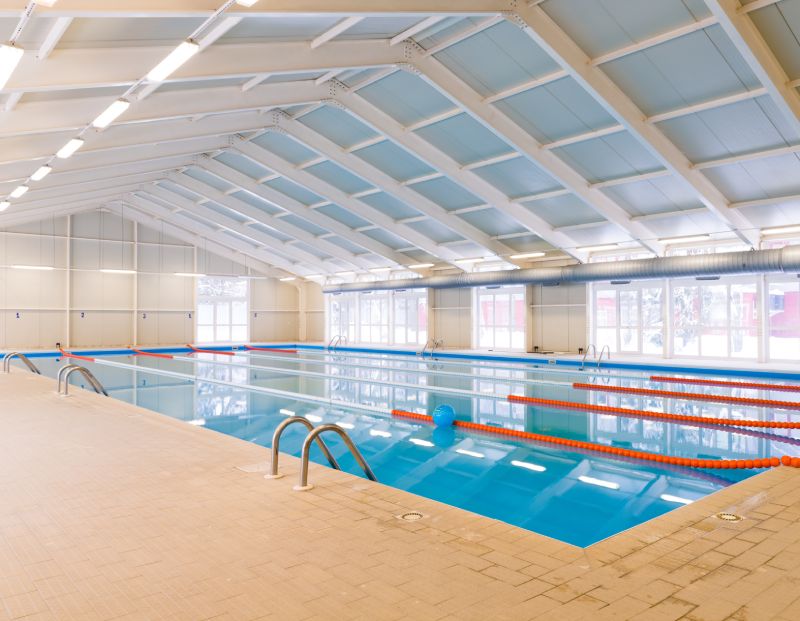
Some ponds (including yours perhaps?) are filtered 24 hours a day beyond the minimum regulatory flow rate.
It is true that some older ponds with a low number of nozzles and covers have areas of poorly stirred water, which can facilitate chemical quality problems in the event of heavy use and/or heat, etc., but ask yourself this question:
- Why would it be justified to overfilter 24 hours a day in recent ponds with a large number of nozzles regularly placed at the bottom, with total reverse flow and no significant "dead" zones?
- Even for older ponds, isn't the need for over-filtration actually limited to certain periods rather than 100% of time?
If you overfilter 24 hours a day by even 10% (220 m3/h instead of 200 m3/h for example), then you consume 33% more electricity, or 12 kW instead of 9 kW.
3kW x 24h x 350 days = 25.2 MWh of potential savings, i.e. up to €5500 saved each year at the same assumed rate of €220/MWh.
So savings can easily be made?
Nearly 10 k€ of savings per year just for a pool, it sounds like a dream but it's not that simple, otherwise I have no doubt that you would have already done it.
1) Simply reducing the 24-hour filtration rate is sometimes not possible for the reasons given above: the reduced flow rate, even if it complies with the regulations, may be insufficient in certain circumstances and therefore cannot be applied continuously.
2) Varying the filtration rate over certain periods of time may require changes to the hydraulic systemIt also requires the installation of variable speed drives for pumps where the system is not yet equipped with them. It also requires the installation of variable speed drives for pumps where the system is not already equipped.
3) The reduction of the flow rate during unoccupied periods by 25% compared to the regulatory minimum flow rate is subject to a condition
the pool must operate in reverse flow (100% overflow) during the period concerned. This sometimes requires the installation of motorised valves and modifications to the pumping group, but also that the chutes and the buffer tank support this new operating mode for pools usually operated in mixed hydraulics.
4) It is not enough to install a clock to control all this efficiently: In the event of a high accumulation of activity in the pools in the previous hours, high temperature or a slightly borderline chemical quality of the water, it is not necessarily relevant to reduce the filtration rate, even when the regulations would allow it in absolute terms. Variations must also take into account the technical characteristics of the filters, particularly in terms of minimum/maximum pressure and the impact of too sudden variations.
So how can you effectively reduce the consumption of your filter pumps?
- Check the various technical points mentioned above for the installation concerned in order to quantify the extent of the modifications to be carried out (the installation is sometimes already ready and does not require any modification) and their profitability: the return on investment is generally rapid, especially as part of the expenditure can be covered by CEE.
- Carry out any required modifications, as defined by the previous study.
- Control the drives and any ancillary equipment with an "intelligent" device that takes into account all the constraints and real operating conditions in order to modulate the flow rates (schedule, real activity, water temperature, pool chemistry, etc.), such as Smart Pooling® : energy reduction solution for public pools (sunnyshark.com)
If you wish to embark on this virtuous path, do not hesitate to contact usWe will be happy to help you
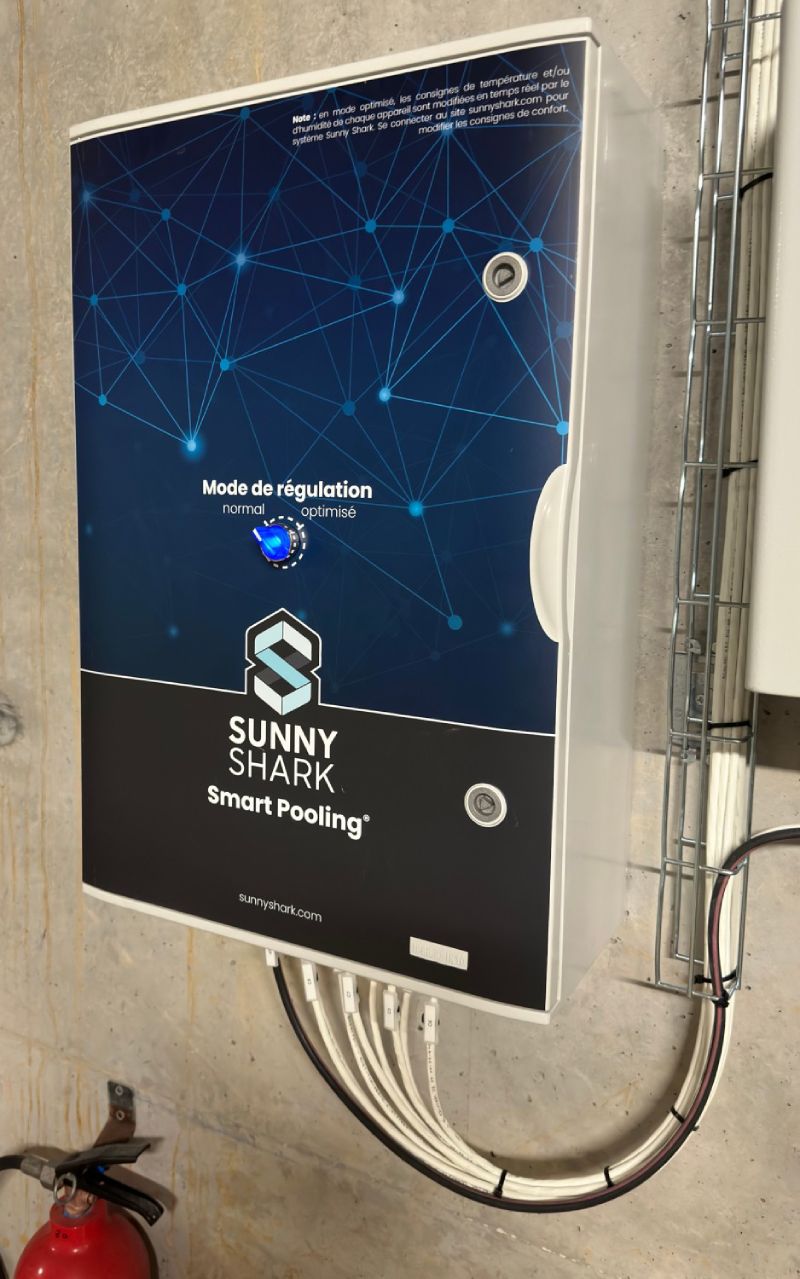
Smart Pooling® box to control the installations, including the filter pump drives


